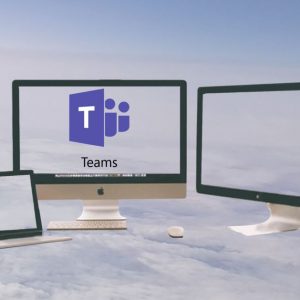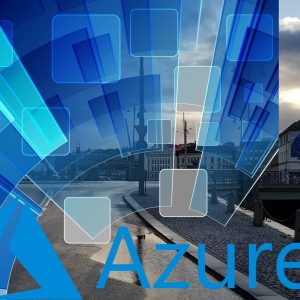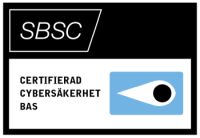Beskrivning
During this five-day course, you focus on installing, configuring, and managing VMware vRealize® Automation™. You learn about how vRealize Automation can be used to automate the delivery of virtual machines, applications, and personalized IT services across different data centers and hybrid cloud environments.
The course covers how to manage both on-premise systems and cloud services. The course covers how vRealize Automation Service Broker can aggregate content in native formats from multiple clouds and platforms into a common catalog. This course also covers interfacing vRealize Automation with other systems using VMware vRealize® Orchestrator™ and how to use vRealize Automation to manage Kubernetes systems and leverage systems like Ansible.
Objectives
By the end of the course, you should be able to meet the following objectives:
• Describe the vRealize Automation architecture and use cases in cloud environments
• Manage vRealize Automation entities on VMware and third-party virtual and cloud infrastructures
• Configure and manage Cloud Accounts, Projects, Flavor Mappings, Image Mappings, Network Profiles, Storage Profiles, Volumes, Tags, and Services
• Create, modify, manage, and deploy Blueprints
• Connect to a Kubernetes Cluster and manage images and deployments
• Customize services with CloudConfig
• Configure and manage the Service Broker
• Configure and manage ABX actions, custom properties, event broker subscriptions, and vRealize Orchestrator workflows
• Integrate with vRealize Orchestrator
• Install vRealize Automation with Lifecycle Configuration Manager
• Describe Cloud Automation Services (Cloud Assembly and Code Stream).
• Use logs and CLI commands to monitor and troubleshoot vRealize Automation
Audience
Experienced system administrators and system integrators responsible for designing and implementing vRealize Automation.
Prerequisites
This course requires completion of one of the following courses:
• VMware vSphere: Install, Configure, Manage [V6.x]
• VMware vSphere: Fast Track [V6.x]
Experience working at the command line is helpful.
This course requires that a student be able to perform the following tasks with no assistance or guidance before enrolling in this course:
• Create VMware vCenter Server® objects, such as data centers and folders
• Create a virtual machine using a wizard or a template
• Modify a virtual machine’s hardware
• Migrate a virtual machine with VMware vSphere® vMotion®
• Migrate a virtual machine with VMware vSphere® Storage vMotion®
• Configure and manage a vSphere DRS cluster with resource pools.
• Configure and manage a VMware vSphere® High Availability cluster.
If you cannot perform all of these tasks, VMware recommends that you complete one of the prerequisite courses before enrolling in VMware vRealize Automation: Install, Configure, Manage
Programme
1 Course Introduction
• Introductions and course logistics
• Course objectives
2 vRealize Automation Overview and Architecture
• Describe the purpose and functionality of vRealize Automation
• Describe the vRealize Automation architecture
• Describe the use of VMware Workspace ONE® AccessTM
• Describe the relationship between Kubernetes clusters, containers, and vRealize Automation services
• Describe CLI commands for vRealize Automation 8 cluster management
• Describe Cloud Assembly
• Describe Service Broker
• Describe Code Stream
3 vRealize Automation Installation
• List the different vRealize Automation deployment types
• Explain the purpose of vRealize easy installer
• Recognize the vRealize Automation installation process
4 Authentication and Authorization
• Identity the steps involved in integrating Workspace One with Active Directory
• Recognize features of Workspace One
• Recognize the user roles available in vRealize Automation
• Identify the key tasks performed by each user role
5 Basic Initial Configuration
• Quickly create a basic configuration with a cloud account, cloud zone, project, flavor mapping, and image
mapping.
6 Creating and Deploying a Basic Blueprint
• Configure a basic blueprint
• Deploy a basic blueprint
7 Tags and Storage Configuration
• Configure tags
• Configure storage profiles
• Describe volumes
• Use tags and storage profiles in a blueprint
8 Advanced Blueprints
• Use YAML coding in blueprints, including user inputs, text formatting, and conditional expressions
• Create a blueprint for multiple clouds
• Use iterative design and version control in blueprints
• Use Cloud-Config
9 Integrating NSX-T Data Center
• List the capabilities and use cases of NSX-T Data Center
• Describe the NSX-T Data Center architecture and components
• Integrate NSX-T Data Center with vRealize Automation
• List the supported network profiles in vRealize Automation
• Use NSX-T Data Center components to design a multitier application blueprint
• Identify the network and security options available in design canvas
10 Cloud Accounts
• Configure and use an AWS cloud account
• Configure and use an Azure cloud account
• Configure and use a Google Cloud Platform cloud account
• Use VMware Marketplace
11 Service Broker
• Describe the use case of Service Broker
• Define content source and content sharing
• Define Service Broker policy enforcement
• Use custom forms for catalog items
12 Customization of Blueprints
• Use CloudConfig and Cloud-Init
• Customize the hostname
• Create users
• Install software
• Manage the power state
13 vRealize Automation Extensibility
• Describe ABX actions
• Set custom properties
• Create event topics
• Create subscriptions
• Create and use workflows
• Integrate vRealize Automation with vRealize Orchestrator
Kursen levereras i samarbete med

Kontakta oss om denna kurs
Ditt meddelande har skickats

![VMware vRealize Automation: Install, Configure, Manage [V8]](https://republify.se/wp-content/uploads/2022/03/VMWARE.png)





Recensioner
Det finns inga recensioner än.